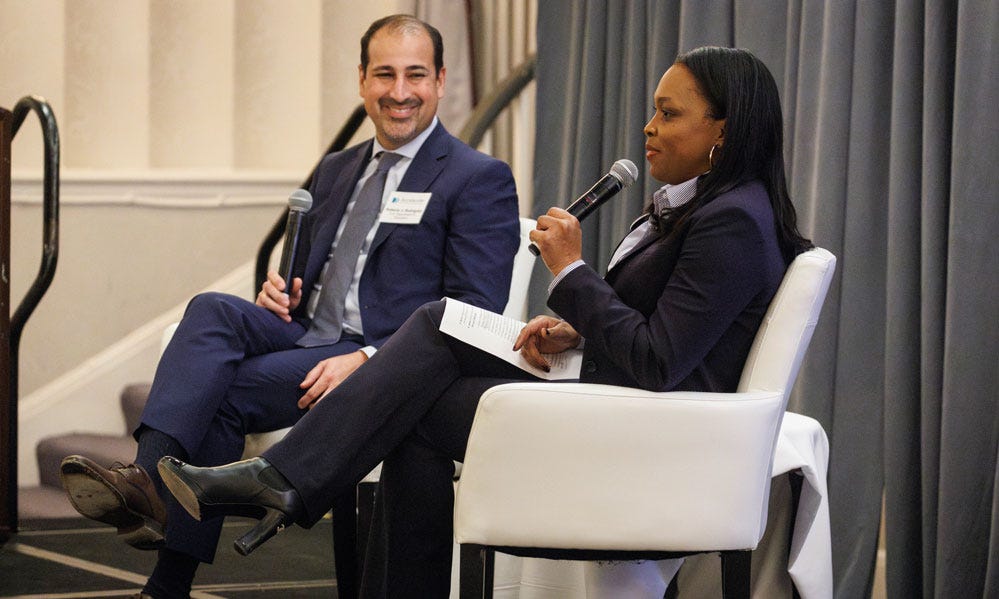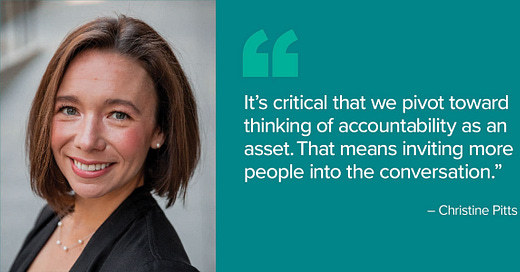Welcome back to the Education Policy Hotlist!
Before diving in, I hope you’ll take a moment to read my latest piece about the evolution of school accountability. As a senior fellow at Education Northwest, I am learning from their team to understand how accountability plays out across the U.S. today and where we may be headed.
In my new piece, I reflect on the importance of framing accountability as an asset that serves students, teachers, and the entire community. Understanding accountability as a positive force can lead to better outcomes for all stakeholders in the education system and a more democratized approach to data, information, and our own stories. This perspective shift fosters trust, transparency, and continuous school improvement.
Effective accountability systems strike a balance, holding schools and educators accountable while providing necessary support. We can create a more equitable and effective education system by emphasizing both outcomes and this critical infrastructure for sustainable and adaptable assistance. The public must be aware of these efforts to ensure that schools are held responsible for student success while receiving the necessary resources and guidance.
To stay updated throughout the week, follow the Hotlist on Instagram, Facebook, Linkedin, and Twitter. Thank you, as always, for reading the Hotlist.
Leadership Perspective
Navigating the ‘purple classroom’
A recent interview with USC’s Morgan Polikoff discusses new poll data revealing that while Americans broadly agree on the purpose of education, there are significant partisan divides on topics such as race and LGBTQ issues in the classroom. The ‘Purple Classroom’ concept aims to find common ground, but the data suggests a need for more detailed conversations about educational content and timing. This dialogue is essential for understanding and shaping the future of inclusive education.
Civics education needs a reboot
The 74 emphasizes the growing need for enhanced civics instruction in American schools amidst societal disunion and disbelief. The article discusses efforts like the Educating for American Democracy initiative and the American Birthright standards, aiming to revitalize civics education. Understanding the importance of informed citizenship, this call to action is significant for educators, parents, and policymakers.
Janice Jackson on tutoring, free college, and choice in Chicago
Former Chicago Public Schools CEO Janice Jackson emphasizes the value of high-dosage tutoring. She advocates for evidence-based approaches to reading instruction, including phonics-based methods. As a critical voice, she champions equity and parental rights in education policy decisions — including the value of choice.

Five years closer to CTE success + a farewell
Mark Schneider, Director of IES, reflects on his career and the progress made in career and technical education (CTE). Despite historically being an under-researched field, efforts like the CTE Research Network have expanded the evidence base for CTE. Schneider emphasizes the need to broaden geographic coverage, expand types of supported CTE work, and leverage powerful analytic tools to improve CTE outcomes.
Teacher Workforce
Teacher layoffs on the rise
K-12 Dive reports increased teacher layoffs due to budget cuts, declining enrollments, and the end of federal pandemic relief funds. The article highlights the situation in districts like San Diego Unified, which faces significant budget shortfalls. This trend is concerning as it affects educational quality and access, making it vital information for stakeholders and the public.
Mapping student-to-teacher ratios across districts
In the 2022-23 school year, public schools added 173,000 students and 159,000 employees, including 15,000 additional teachers. Staffing levels reached an all-time high on a per-student basis. However, as districts spend down federal ESSER dollars, they may face layoffs or closures of under-enrolled buildings. Understanding staffing trends is crucial for addressing educational needs and ensuring effective resource allocation.
By examining data from 9,500 districts (comprising 92% of all students nationwide), Aldeman finds that nearly three-quarters of districts either serve fewer students per teacher than six years earlier or add teachers while serving fewer students. Some districts face higher student-to-teacher ratios, while others have improved their ratios. Understanding these trends informs decision-making and resource allocation as schools navigate fiscal challenges. Check out the interactive map with the74.
Student Outcomes
Early literacy progress slows
Amplify’s middle-of-year report indicates that early literacy improvements in the U.S. are decelerating, with only half of K–2 students on track for learning to read. This slowdown highlights the need for immediate action to accelerate literacy outcomes, especially as reading proficiency by the end of third grade is a key predictor of academic success. The report underscores science-based reading instruction's importance in improving student literacy rates.
High-dosage tutoring shows promise
A report from the University of Chicago Education Lab reveals that high-dosage tutoring, even post-pandemic, can significantly improve math scores, equating to nearly two-thirds of a year’s learning. This finding is crucial as it suggests a scalable method to mitigate pandemic-related learning losses, with ongoing research to confirm its impact on reading scores. The potential for high-dosage tutoring to address educational disparities makes this an essential development for policymakers and educators.
California’s Science of Reading Bill Aims to Address Literacy Challenges
With 6 in 10 California third graders reading below grade level, proposed legislation mandates evidence-based reading instruction and policy changes to transform teacher preparation and teachers as leaders in literacy standards and pedagogy. The bill calls for an updated English curriculum aligned with research-proven reading strategies. It emphasizes professional development for teachers and progress monitoring for struggling readers.
Education Funding
ESSER funding propels improvements at all school governance levels
Success stories from the one-time Elementary and Secondary School Emergency Relief (ESSER) fund highlight positive outcomes. Schools have used these funds to create kindergarten interventionist positions, strengthen relationships between students, staff, and families, and implement tutoring initiatives. Understanding the effectiveness of these investments is crucial for future funding streams to sustain improvement programs.

Cybersecurity and Tech
Federal support for K-12 cybersecurity
The U.S. Department of Education and the Cybersecurity and Infrastructure Security Agency have established a Government Coordinating Council to enhance K-12 cybersecurity. This council aims to foster collaboration across government levels to protect schools from cyber threats, responding to the increasing cyberattacks targeting educational institutions. The initiative is critical in safeguarding sensitive student data and maintaining the integrity of digital learning environments.
Investing in diversity and innovation
TechCrunch covers Jobs for the Future’s new $50M fund to invest in underrepresented founders, a move that could reshape the landscape of educational technology and employment. This fund is part of a growing trend of impact-focused investments seeking to drive social change while generating returns, and it highlights the importance of supporting diverse voices in creating solutions for workforce challenges. The initiative is a significant step towards inclusive innovation and is crucial for the public to understand the evolving dynamics of educational investment.
Attendance
Parents’ awareness of children’s school attendance
Less than half of caretakers with children at risk of chronically absent status report concern. While some parents feel that having online materials available mitigates anxiety around absences, caretakers still report strongly valuing in-person attendance. Online resources help expand learning opportunities, but schools must impress upon parents that they are a supplement to, not a substitute for, in-person attendance. Chronic student absenteeism has become a significant challenge post-COVID-19, affecting students’ skills and knowledge development. Despite this, only 15% of school leaders are “extremely worried” about absenteeism, highlighting the need for parental involvement in addressing this issue.
Childcare
Michigan’s caring for MI's future through expanded childcare access
Michigan’s Caring for MI Future initiative aims to help childcare entrepreneurs open 1,000 new or expanded childcare programs by the end of 2024. The state has made significant progress by lowering costs and increasing access to safe, reliable, high-quality childcare options. With a $100 million investment, Michigan achieved its goal ahead of schedule, connecting more families with essential early learning and care resources. This effort is crucial for supporting working parents and ensuring equitable access to quality child care across the state.
Accountability
New accountability for student-centered education
Mark Elgart argues for a shift in educational accountability systems to focus on student-centered learning. He suggests that current end-of-year assessments, a legacy of No Child Left Behind, are outdated. He proposes a system that evaluates students throughout the year to provide timely feedback for teaching adjustments. This change could significantly impact teaching and learning, emphasizing continuous improvement over static rankings.
Dr. Christine Pitts is an executive leader advancing evidence-based public policy for social impact. Follow her on LinkedIn and Instagram for more updates.











